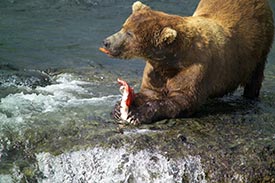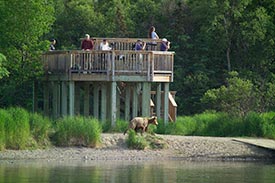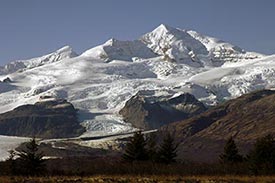Katmai National Park and Preserve
Wildlife Viewing



Description
The 1912 eruption of Novarupta – ten times more forceful than the eruption of Mount St. Helens and twice as violent as Krakatoa – dramatically transformed the Katmai area. It remains one of the most fascinating geological sites in the world today. On the drive from Brooks Camp to the Valley of Ten Thousand Smokes, visitors may observe 30 to 40 species of birds, as well as bears, moose, and wolves. Brooks Camp offers two brown bear viewing platforms. More than a million red salmon migrate annually from Bristol Bay into the Naknek system of rivers and lakes. The islands along the coast boast marine mammal haulouts and colonies of seabirds; brown bears and eagles gather along snow-fed creeks. Tundra ponds are home to a variety of waterfowl, beavers and river otters. Katmai hosts many species of birds, including Swainson’s thrushes, Wilson’s warblers, ospreys, merlins, northern harriers, fox and American tree sparrows, and dark-eyed juncos.
Viewing Information
Brown bears are active from May through October; the best viewing is in July and September. Wolves, moose, and beavers are also most visible during the summer. Red salmon begin migrating in late June and begin spawning in August.
Directions
Daily commercial flights from Anchorage bring visitors to King Salmon, 6 miles from the park and 30 miles from the Brooks Camp brown bear viewing platforms. Charter flights are available from King Salmon year round. The lodges and the campground require reservations.
Contact
National Park Service or (907) 246-3305
